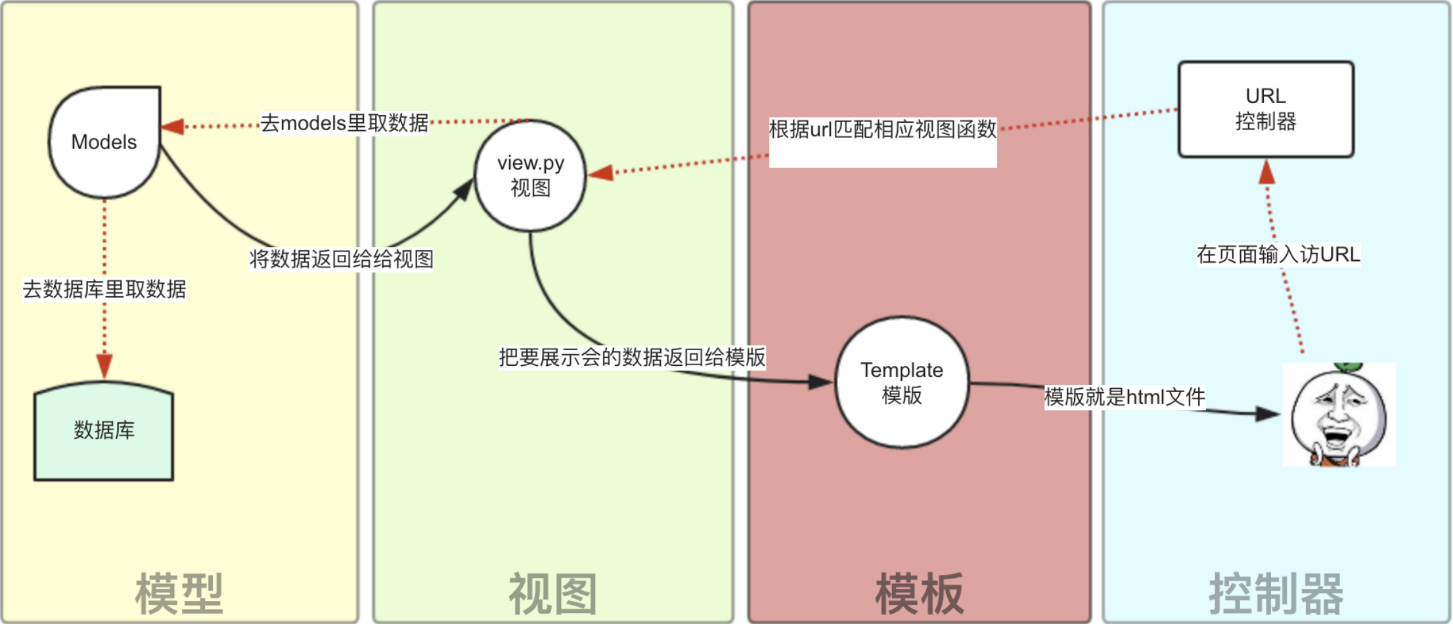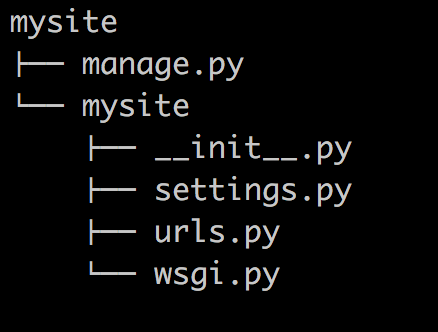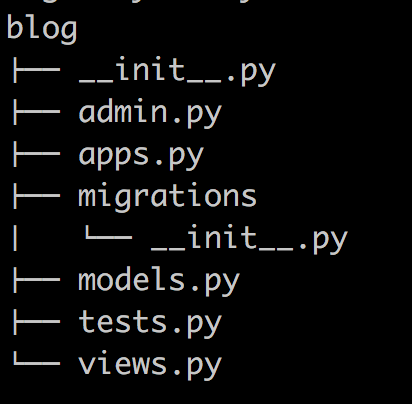web应用
服务端代码

#!/usr/bin/python3 # -*- coding: utf-8 -*- # @Time : 2018/10/22 7:47 # @File : JDserver.py import socket sock = socket.socket() sock.bind(("127.0.0.1", 8800)) sock.listen(5) while True: print("server.................") conn, addr = sock.accept() # conn客户端套接字, data = conn.recv(1024) with open("index.html", 'r', encoding="utf-8") as f: # 打开文件的编码方式必须加,要不报编码错 dat = f.read() print(dat) conn.send(('HTTP/1.1 200 OK %s' % dat).encode("utf-8")) # HTTP/1.1 200 OK 这个是固定格式 # conn.send(b'HTTP/1.1 200 OK 12345646') # HTTP/1.1 200 OK 这个是固定格式 conn.close()
index.html

<!DOCTYPE html> <html lang="en"> <head> <meta charset="UTF-8"> <title>Title</title> </head> <body> <h1>hello luffycity!</h1> <img src="https://ss0.baidu.com/6ONWsjip0QIZ8tyhnq/it/u=1971562986,2214539904&fm=58&bpow=600&bpoh=800" alt=""> <a href="https://www.luffycity.com">路飞</a> </body> </html>
wsgiref简单描述
简单示例:

按着 http 请求协议解析数据 # wsgiref 专注于web业务开发 按着 http 相应协议封装数据 # wsgiref #!/usr/bin/python3 # -*- coding: utf-8 -*- # @Time : 2018/10/22 9:41 # @File : wsgi_server.py from wsgiref.simple_server import make_server def application(environ, start_response): # 按着 http 请求协议解析数据 :environ字典 # 按着 http 相应协议封装数据: start_response print(environ) print(type(environ)) # 当前的请求路径 global pa path = environ.get("PATH_INFO") start_response("200 OK", []) if path == "/login": pa = "login.html" elif path == "/index": pa = "index.html" with open(pa, "r", encoding="utf8") as f: data = f.read() return [data.encode("utf8")] # 封装socket httped = make_server("127.0.0.1", 8090, application) # 等待用户连接: conn, addr = sock.accept() httped.serve_forever() # application(environ,start_response)
WSGI对于应用程序有以下标准规定:
1. 应用程序必须是一个可调用的对象,因此,应用程序可以是一个函数,一个类,或者一个重载了__call__的类的实例。
2. 应用程序必须接受两个参数并且要按照位置顺序,分别是environ(环境变量),以及start_response函数(负责将响应的status code,headers写进缓冲区但不返回给客户端)。
3. 应用程序返回的结果必须是一个可迭代的对象。
start_response('200 OK', [('Content-Type', 'text/html')])# 第二个参数可以是空列表
return [data.encode('utf8')] #返回的数据必须是列表+字节数据
server = make_server("", 8080, run_server)# 第一个参数是ip,可以为空

from wsgiref.simple_server import make_server def run_server(environ, start_response): start_response('200 OK', []) path = environ.get("PATH_INFO") data = "<h2>hello wordl</h2>" if path == '/login': with open("./html/login.html", 'r') as f: data = f.read() return [data.encode('utf8')] def run(): server = make_server("", 8080, run_server) server.serve_forever() if __name__ == "__main__": run()
MVC与MTV模型
MVC
Web服务器开发领域里著名的MVC模式,所谓MVC就是把Web应用分为模型(M),控制器(C)和视图(V)三层,他们之间以一种插件式的、松耦合的方式连接在一起,模型负责业务对象与数据库的映射(ORM),视图负责与用户的交互(页面),控制器接受用户的输入调用模型和视图完成用户的请求,其示意图如下所示:

MTV
Django的MTV模式本质上和MVC是一样的,也是为了各组件间保持松耦合关系,只是定义上有些许不同,Django的MTV分别是值:
M 代表模型(Model): 负责业务对象和数据库的关系映射(ORM)。
T 代表模板 (Template):负责如何把页面展示给用户(html)。
V 代表视图(View): 负责业务逻辑,并在适当时候调用Model和Template。
除了以上三层之外,还需要一个URL分发器,它的作用是将一个个URL的页面请求分发给不同的View处理,View再调用相应的Model和Template,MTV的响应模式如下所示:

一般是用户通过浏览器向我们的服务器发起一个请求(request),这个请求回去访问视图函数,(如果不涉及到数据调用,那么这个时候视图函数返回一个模板也就是一个网页给用户),视图函数调用模型,模型去数据库查找数据,然后逐级返回,视图函数把返回的数据填充到模板中空格中,最后返回网页给用户。
django安装与新建项目
pip3 install django==2.0.1
# 如果网络不好,可能安装会报错:ReadTimeoutError: HTTPSConnectionPool(host='files.pythonhosted.org', port=443): Read timed out.
#解决: 1、pip3 --default-timeout=100 install django==2.0.1
# 2、pip3 install -i https://pypi.tuna.tsinghua.edu.cn/simple django==2.0.1
命令行模式
创建一个文件夹mysites
#进入文件夹创建项目:
django-admin.py startproject mysites

cd mysites
#创建应用
python3 manage.py startapp blog
bolg下面views.py,modules.py最初始
mysites-mysites下面的urls.py和settings.py
mysites下面生成一个文件夹templates存放html

#启动服务
python3 manage.py runserver 8888
#页面直接访问:
127.0.0.1:8888
pycharm创建django项目
选择Django,1、项目名称,2、More-Settings:Application name
小案例:
/timer
urls.py文件中增加控制器

from django.contrib import admin from django.urls import path from my_demo1 import views urlpatterns = [ path('admin/', admin.site.urls), path('timer/', views.timer), ]
views.py中增加timer函数 return render(request,"timer.html",{"ctime":ctime})

def timer(request): import time ctime = time.time() return render(request, "timer.html", {"ctime": ctime})
#ctime是函数返回的时间参数
templates中增加timer.html,当前时间:{{ctime}}

<!DOCTYPE html> <html lang="en"> <head> <meta charset="UTF-8"> <title>Title</title> </head> <body> <h4>{{ ctime }}</h4> </body> </html>
注意:更改代码,不用重新启动项目,django自动重启
访问报错:django.template.exceptions.TemplateDoesNotExist: timer.html
# 修改setting.py中的TEMPLATES-DIRS的值:
'DIRS': [os.path.join(BASE_DIR, 'templates')]

TEMPLATES = [ { 'BACKEND': 'django.template.backends.django.DjangoTemplates', 'DIRS': [os.path.join(BASE_DIR, 'templates')], 'APP_DIRS': True, 'OPTIONS': { 'context_processors': [ 'django.template.context_processors.debug', 'django.template.context_processors.request', 'django.contrib.auth.context_processors.auth', 'django.contrib.messages.context_processors.messages', ], }, }, ]
